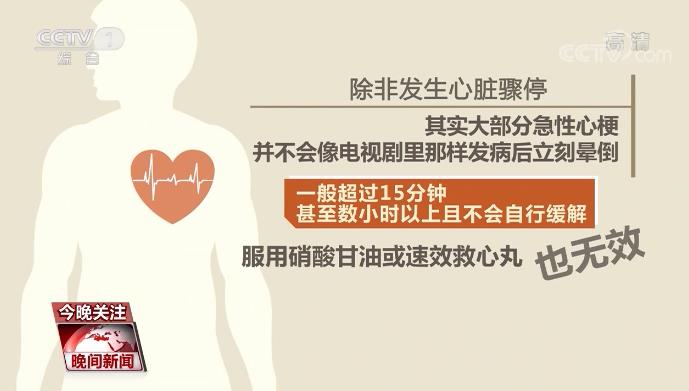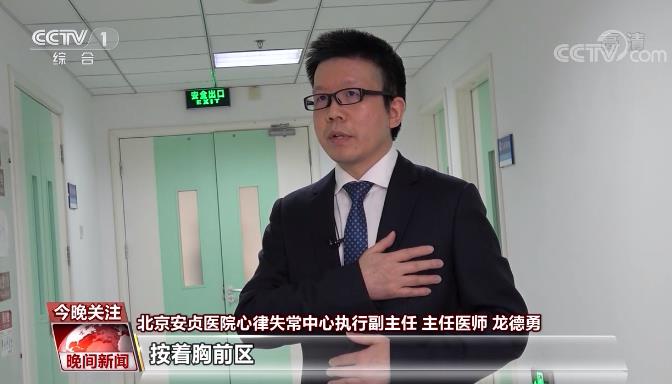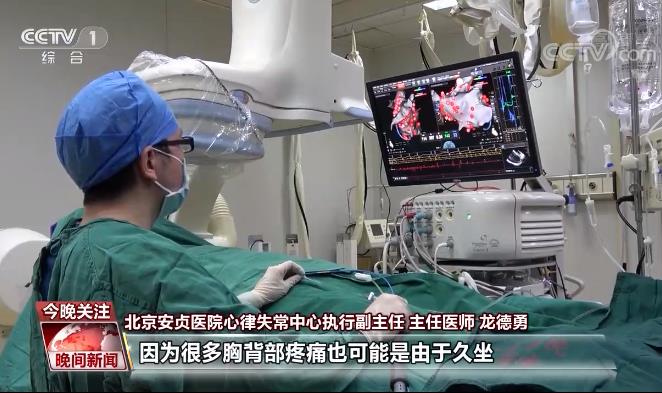Prevention and treatment of myocardial infarction should be vigilant against these signs
CCTV News:When the weather turns cold, we should guard against cardiovascular and cerebrovascular diseases. Tomorrow, that is, November 20th, is the eighth "China Myocardial Infarction Treatment Day" in China. Myocardial infarction, especially acute myocardial infarction, mostly has early symptoms, but many patients don’t realize it, which delays the illness. Let’s take a look at how to realize early detection and early treatment of myocardial infarction.
Most acute myocardial infarction will not faint immediately.
Myocardial infarction is that the blood vessels that supply blood to the heart are blocked by thrombus, which leads to myocardial ischemia and necrosis. So the typical symptoms are mostly located in the chest where the heart is located. Pain often starts from the posterior sternum or precordial area, and the range is at least one palm. Unless there is cardiac arrest, in fact, most acute myocardial infarction will not faint immediately after the onset as in TV series. Generally, it will not relieve itself for more than 15 minutes or even hours, and taking nitroglycerin or quick-acting jiuxin pills is also ineffective.

Long Deyong, Executive Deputy Chief Physician of Beijing anzhen hospital Arrhythmia Center:When acute myocardial infarction occurs, it usually manifests as angina pectoris, but in most people, this kind of angina pectoris does not manifest as obvious pain in the precordial area. Many people may manifest as a sense of compression and urgency in the chest. We found that many people subconsciously open their right hands and press the precordial area when describing this affliction, which is a relatively characteristic performance.

The old man suffered from chest pain and back pain for many days, but unfortunately he died of myocardial infarction.
Experts say that before most myocardial infarction occurs, there will be some precursor symptoms. On the 11th of last month, Wuchang First Aid Station of Wuhan Emergency Center received a call from 120 Command Center, claiming that an old man had a sudden heart attack. The doctor rushed to the scene and performed cardiopulmonary resuscitation on the patient, and then rushed to the hospital. Unfortunately, the rescue was unsuccessful. It is understood that the elderly usually have the habit of smoking and drinking, and back pain and chest pain have not attracted attention for several days.
There may be atypical symptoms hours or days before the attack.
According to experts, in addition to chest pain, some atypical premonitory symptoms may appear hours or even days before the onset of myocardial infarction. For example, the neck and throat are uncomfortable, the upper limbs and left shoulder ache, persistent back pain, persistent upper abdominal pain, and in a few cases, it can also be manifested as toothache or mandibular pain. Of course, it doesn’t mean that if you have the above symptoms, you will immediately suspect myocardial infarction, but also whether you are a high-risk group.

Long Deyong, Executive Deputy Chief Physician of Beijing anzhen hospital Arrhythmia Center:For those patients with cardiovascular risk factors, such as hypertension and diabetes, if these symptoms appear, we need to be especially vigilant. Many people say that my chest and back pain is a myocardial infarction, which is not necessarily because many chest and back pains may also be caused by sedentary, and this kind of hard work leads to this kind of fatigue stress or something.